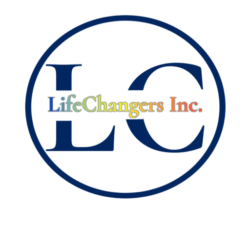Relapse is a common occurrence among individuals who have received treatment for drug or alcohol addiction, with statistics showing that between 80-95% of people experience a relapse within one year. This is primarily due to the fact that chronic recurring brain disorders associated with addiction cannot be completely cured, but rather must be effectively managed. Those in recovery must learn to control their compulsive urges for the long term. This involves recognizing and understanding their triggers – the people, places, and things that may contribute to their addictive behavior – and developing strategies to moderate them. Unfortunately, there are times when these triggers become overwhelming, leading individuals to revert back to substance use. In the event of a relapse, it is important to know what steps to take next.
Distinguishing between lapse and relapse is crucial in understanding the journey of recovery. When individuals complete rehab treatment, they are equipped with the necessary tools to maintain a life free from substance abuse. They are encouraged to feel confident in their ability to resist the urge to use alcohol or drugs, thanks to the strategies they have learned. However, unexpected challenges or stressors can disrupt their progress. A “slip” or “lapse” refers to a minor setback that occurs early in the recovery process. On the other hand, a “relapse” typically occurs later on, after a significant period of successful recovery. After months or even years of sobriety, individuals may start to feel overly confident in their ability to stay clean. Tragic events like the loss of a loved one, a divorce, or job loss can trigger addictive behaviors and lead to a relapse. In some cases, individuals may substitute one addiction for another, making it difficult for them to acknowledge that they have relapsed. This can hinder their ability to seek treatment and get back on track towards recovery.
The Three Stages of Relapse
Health professionals concur that relapse is not just a single event but a series of stages. The three main stages of relapse are emotional, mental, and physical. Understanding these stages is crucial in recognizing when you may need to seek professional assistance. In the emotional stage, individuals start to confront the challenging emotions that may have fueled their addiction, such as anxiety and anger. During this phase, self-care may be neglected, and adherence to the treatment plan may slip.
The mental stage follows, where individuals grapple with the internal debate of whether or not to use again. Rationalizations may arise, convincing oneself that indulging in just a small amount of the substance will not cause harm.
Finally, the physical stage occurs, where the individual actively seeks out ways to use drugs or alcohol. Recognizing these stages can help in taking proactive steps to prevent relapse and seek help when needed.
How to Prevent a Relapse
Following a setback, it is crucial to refocus your energy and attention. Effective residential rehab programs always include a detailed relapse prevention strategy. This plan is designed to assist you in adopting positive habits, learning effective coping mechanisms, and utilizing Cognitive Behavioral Therapy (CBT) to rewire your brain away from addictive behaviors.
Remember the valuable skills you have acquired during your recovery journey thus far, and make a conscious effort to put them into practice once again. Utilize distraction techniques to combat triggers and prioritize self-care. Replace detrimental behaviors with healthier alternatives such as taking a leisurely walk, indulging in a relaxing bath, or immersing yourself in a good book. Reconnecting with fellow rehab alumni may also prove beneficial. While recovery is a deeply personal experience, these individuals have faced similar obstacles and can offer encouragement as you strive to uphold your initial objectives and triumph in preventing future relapses.

